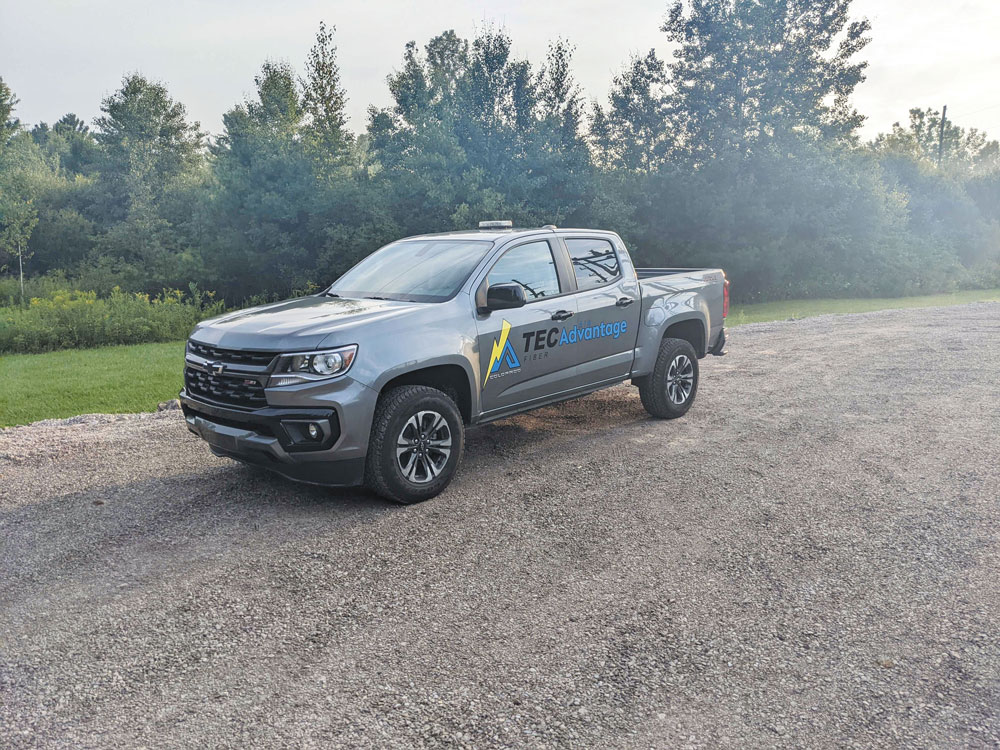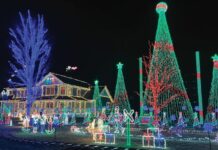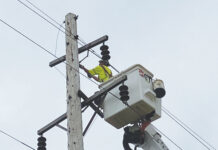As we approach our first year of construction, progress of our TEC Fiber-to-the-Home (FTTH) project is on pace for an estimated 350 miles of installed fiber optic cable. Those miles include backbone construction, distribution construction, and Multi-Service Terminal (MST) construction. Many members comment that they see the cable going up in the air and ask if they will soon have service to their home. The answer is yes, but it isn’t always as quickly as we all would like. There is a process to getting the “light” to your home, and it is hoped that this article makes it more understandable.
What happens first? Aside from having a build design in place, which included many hours of data collection, such as locations of poles, homes, and where we need to build, we need to order materials to construct and get qualified contractors hired to build out. Permitting work needs to be done as well. Permits are required from townships, road commissions, MDOT, drain commissions, zoning regulators, and others to use public right-of-way spaces where construction is not built in private easements. All of this work is unseen but necessary to get to the point of fiber cable going in the air or the ground.
The first work that most people see is the mainline and backbone fiber going in. That is when the excitement starts, and realization sets in that fiber service to their home or business is not far away. But there is a lot more work to be done. The next step in the process is placing MSTs, which provide the ability to run many broadband subscribers from one terminal. MSTs could have anywhere from four to 12 ports and will be the point where your service will come from. Once in place, all the MSTs and mainline fiber will need to be spliced together, allowing the light to pass and reach your home. While this process is taking place, special equipment called an Optical Line Terminal (OLT) is installed at our substations. OLTs allow light from equipment farther upstream to be processed and used by subscribers. The splicing then has to be tested at the MST ports, and once acceptable light levels are confirmed, that area can be turned on for service.
When your area is open for service, what comes next? It is a relatively simple process, but it can be very challenging on our end as the demand for FTTH service is very high. Hopefully, you have already preregistered through our CrowdFiber page. If so, you will be sent a notification via email that your area is active, and you can click on the link and go through the sign-up process. Once the required paperwork is completed, someone will contact you regarding a site survey. They may or may not have to personally meet with you to discuss some details at your location. Typically, this will be the case if there is an underground component to your drop install. We will want to know if you have any private infrastructure on your property, such as dog fencing, electrical, drain tile, etc., so that contractors can avoid those locations. MISS DIG will be called, but they only mark utility-based infrastructure. After that site visit is finished, a “drop” install is next. A “drop” is the actual fiber cable that comes from the MST port and goes to a splice point on your home called a Network Interface Device (NID). A NID serves as the transfer point between the drop install and the customer’s in-home wiring. From there, we schedule you with a home installer to complete the process in your home. Finally, you can now enjoy what we hope is the best internet service you’ve ever had.
This may or may not seem complicated. It really isn’t, but unfortunately it can be time-consuming. It is simply the process that must take place to get FTTH to your premises. Hopefully, this article has given you a better understanding of what happens behind the scenes to get TEC members and many non-members the best internet service available.
By Brad Essenmacher, TEC Broadband Manager






